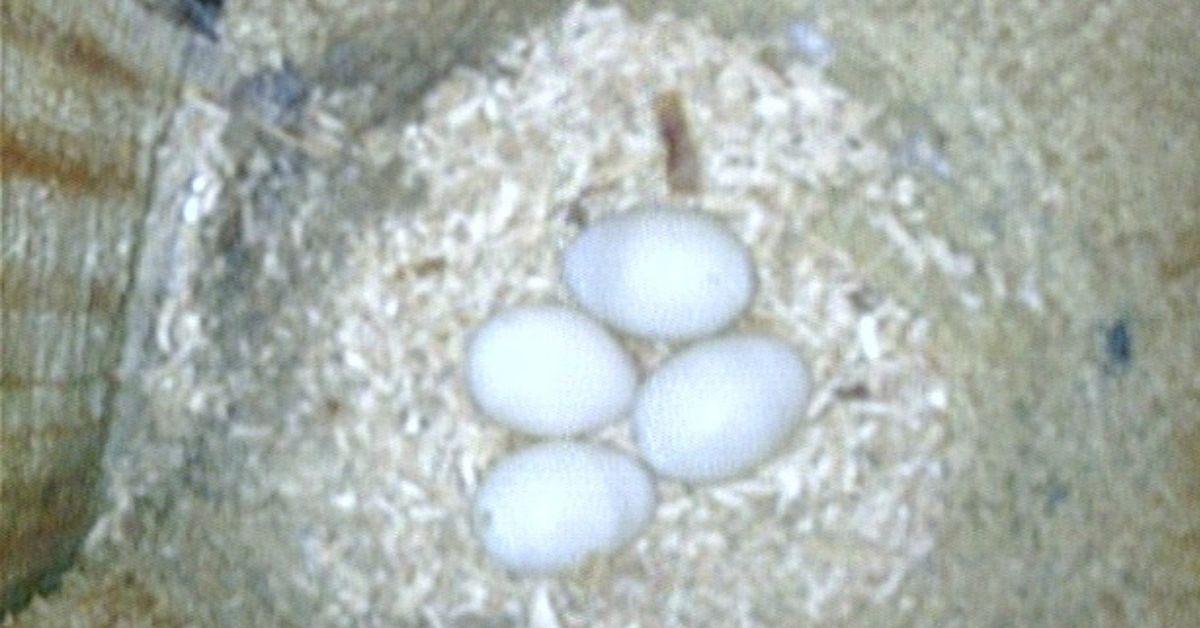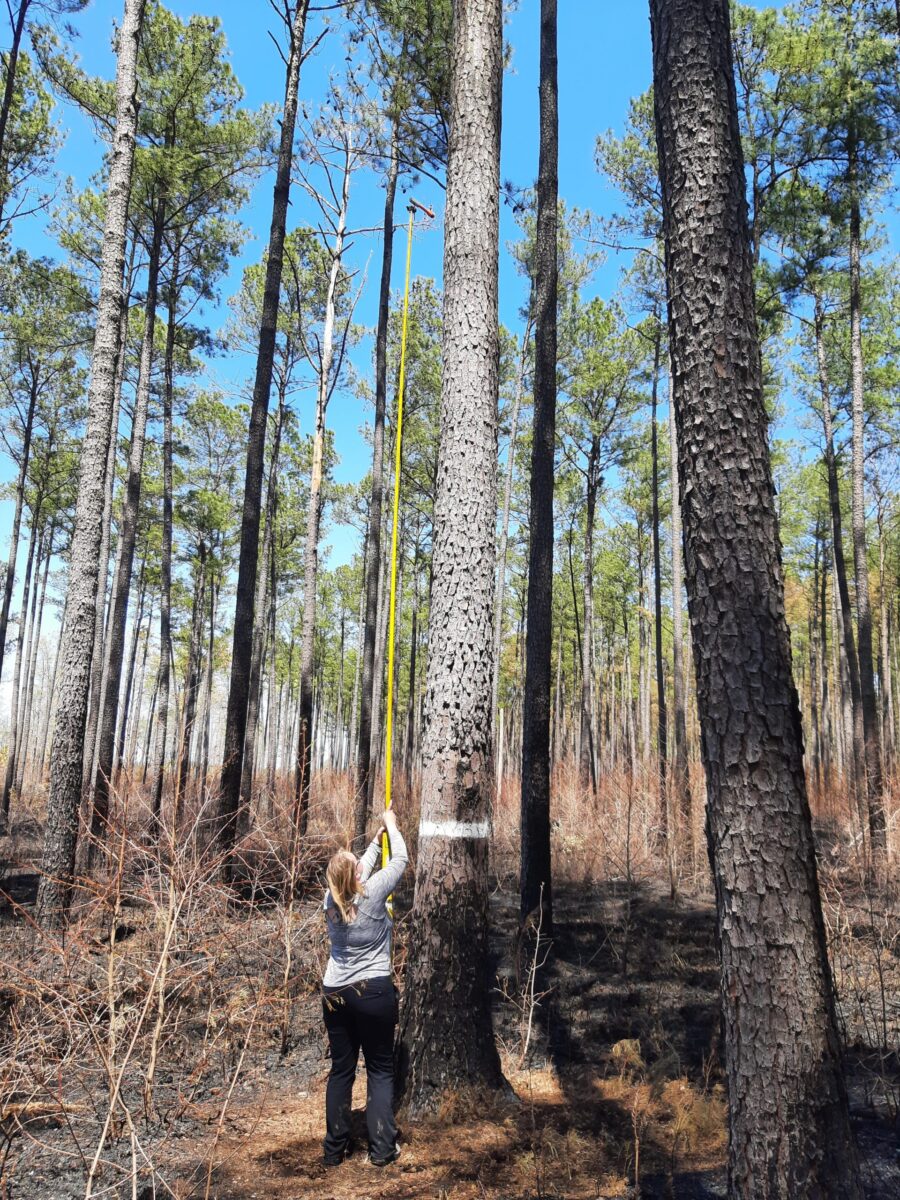
The four eggs in the nest cavity.
By Jessica Ruthenberg, DWR Watchable Wildlife Biologist
Spring has sprung at Big Woods Wildlife Management Area (WMA) and with it, the return of a nesting pair of red-cockaded woodpeckers. Two DWR staff excitedly documented a red-cockaded woodpecker nest during their annual nest checks on April 26. Red-cockaded woodpeckers, also known affectionately as RCWs, are a federally endangered bird species, making this an especially important nest. This is just the fourth RCW nest documented at Big Woods WMA; the first was in 2019.
It’s been an exciting three years for the agency, as DWR acquired and has been restoring habitat for RCW at Big Woods WMA since 2011. The goal has been to facilitate expansion of the RCW population at the neighboring Piney Grove Preserve, which is owned by The Nature Conservancy. Other than the Preserve, the only other location of RCWs in Virginia is located at Great Dismal Swamp National Wildlife Refuge where the U.S. Fish and Wildlife Service and partners have been in the process of reintroducing the birds in attempt to establish a population there.
DWR staff will continue to monitor the progress of the RCW nest at Big Woods on a weekly basis. The nest currently contains four eggs. Two to four eggs is the typical clutch size for RCW nests in Virginia, but a fifth egg could be laid. We are hoping for a successful hatching, which should occur by May 7.

Emma Belling of DWR utilizing a peeping camera to capture an image of the red-cockaded woodpecker nest at Big Woods WMA.
For anyone interested in catching a glimpse of the RCWs at Big Woods WMA, an RCW viewing area is available. The nest is located within the cavity of a loblolly pine tree visible from the viewing area, but it should be noted that the cavity itself is not facing the viewing area. However, it still may be possible to view the adult pair coming, going, and foraging in the area.
To support DWR’s habitat restoration efforts, like that done for RCWs at Big Woods WMA, please consider joining Restore the Wild.



